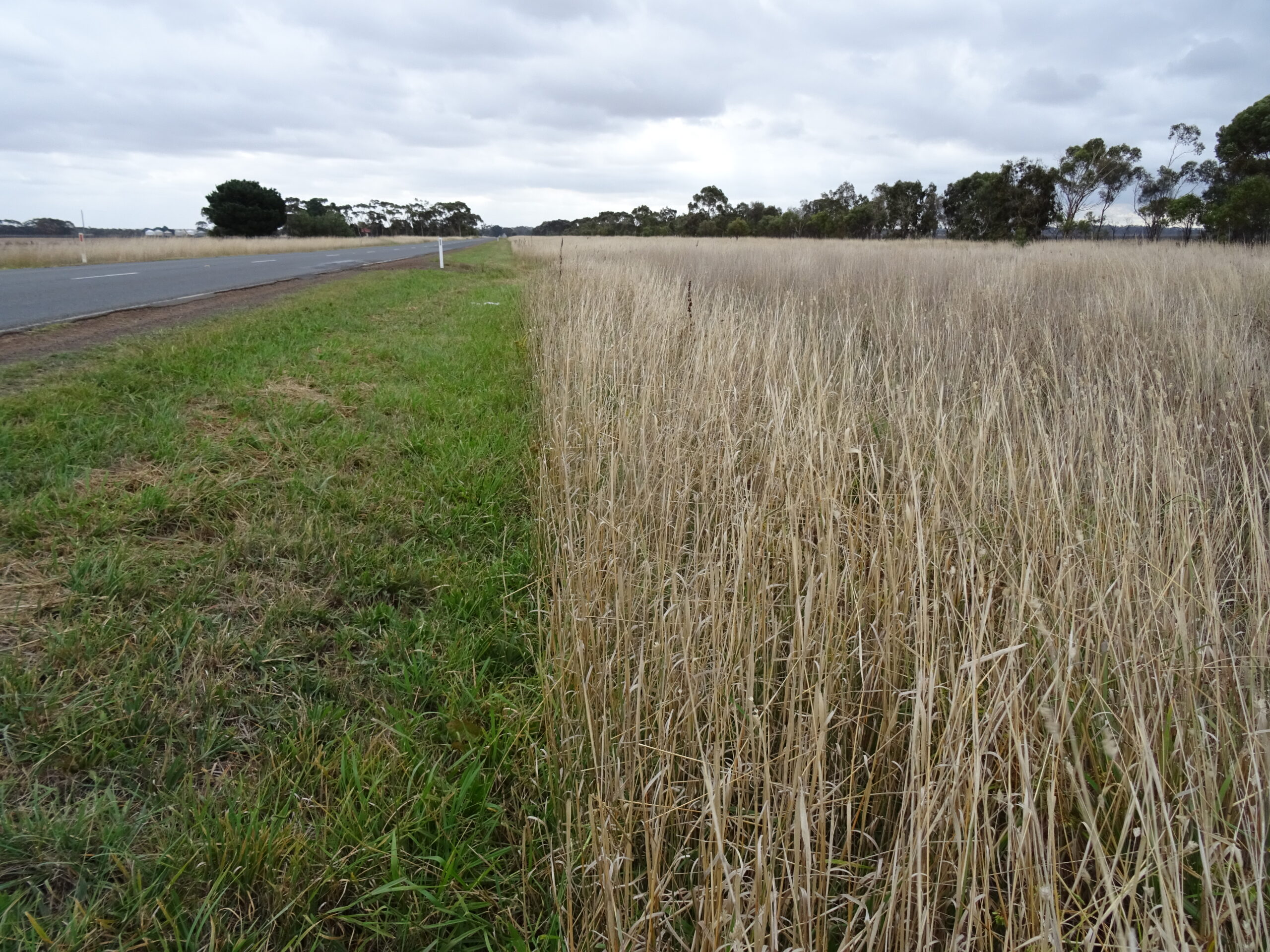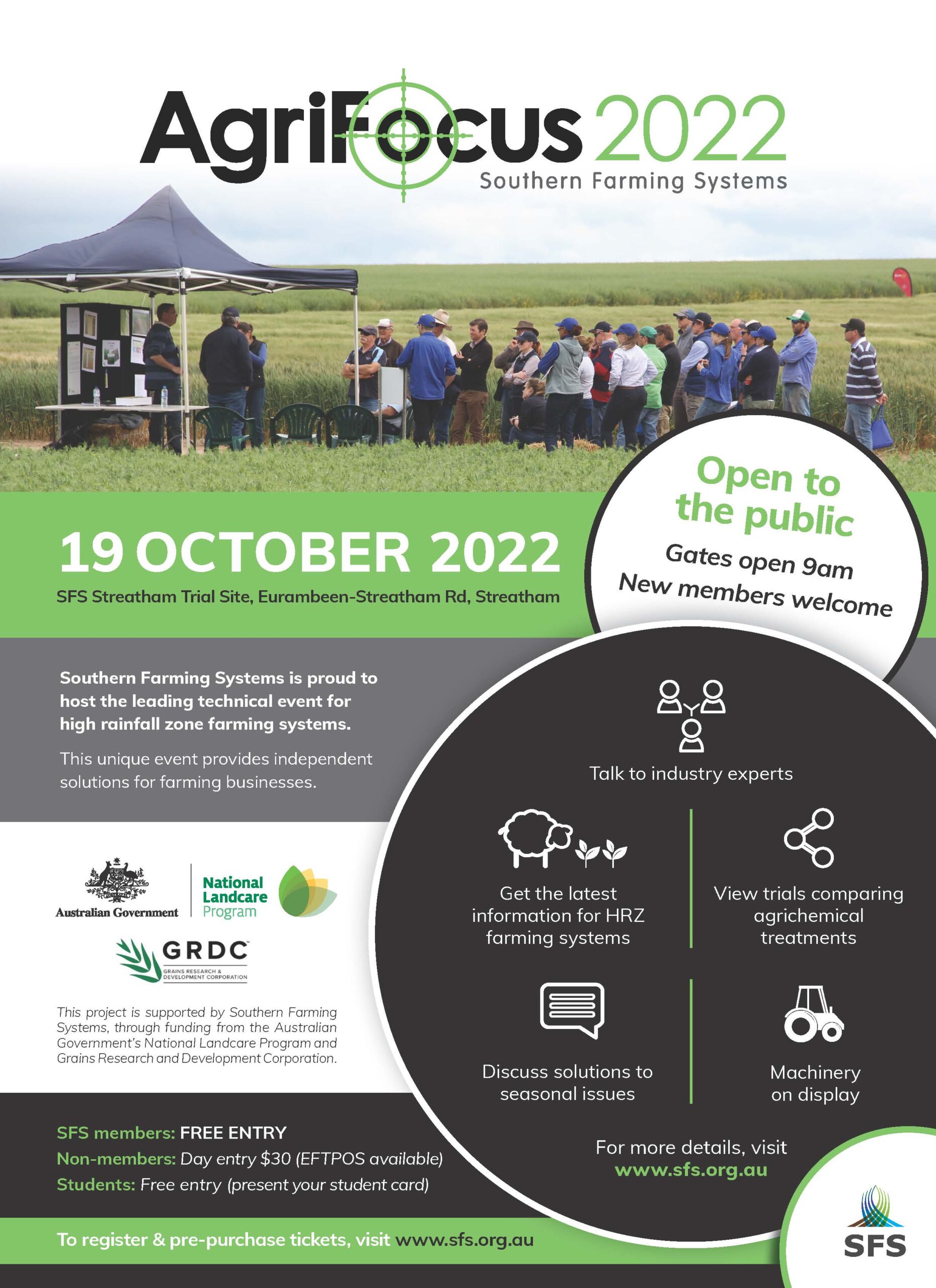
Climate curveballs and pasture production
The 2022 farming season was certainly a challenge with its highs and lows, with rainfall dominating every farming decision. As we move into 2023 the season is uncertain with some talk of El Nino and the forecast drier to normal conditions for SW Victoria. But where does that leave us now?
Southern Farming System South West regional node for the Victoria Drought Resilience Adoption and Innovation Hub wants to remind SW farmers that drought is only one part of the climate cycle, and we are currently in an uncertain phase.
“As the name suggests, uncertain times are hard to predict, but we can take drought resilience actions on things that are under our control” said Jen Clarke SW Node, Drought & Innovation Adoption Officer.
“At the moment tactics to maximise pasture production after a big spring & summer for the Autumn break are crucial.”
Paddocks with lots of dry mature standing grass has implications for growth after the Autumn break. Failure to remove this material reduces potential regrowth from species like perennial ryegrass, phalaris, cocksfoot and tall fescue. It also reduces the breakdown of hard seededness in subclover resulting in less germination.
The dry material is also of very low nutritive content, which means the grazing value is minimal. A supplement would be required for most animals to meet performance targets. The amount of biomass grown after this long-wet spring & summer will make removal challenging.
“Firstly, you should prioritise which paddocks have the potential to give best winter growth and make sure they have the old reproductive seedheads removed. Ideally this dry standing feed would be grazed by the animal, but given the amount still remaining and the low quality of this feed, other approaches may be required,” Jen said.
Mowing or slashing will be beneficial for the perennial grasses, but the trash left behind won’t help sub clover germination. The breakdown of hard seededness in sub clover requires fluctuations in surface soil temperature. Too much dry material acts as a mulch, insulating the soil. This reduces temperature changes and subsequently sub clover germination.
The ideal targets for dry season management are:
- 70% ground cover on flat country and 90% on hill country to protect against soil erosion during summer thunderstorms and wind erosion
- 1,000kg of loose DM/ha on the ground at the autumn break (approximately two handfuls of litter scraped off a 0.1m² area) to allow hard seed breakdown and optimise germination of annual clovers.
As a last resort a cool burn, when fire restrictions allow, can be beneficial. If the dry feed cannot be reduced, we need to be prepared for potentially lower pasture growth in winter.
“This might require the possible use of nitrogen or gibberellic acid to boost winter production.” Jen said.
Scott Chirnside Chairman of Southern Farming Systems believes while we are not in drought, this uncertain period has lessons for drought as well.
“Preparedness is about planning and anticipating the implications if we do or don’t act in certain ways. Currently, if we don’t manage our dry feed, we will pay for it in winter in lower pasture production. The same applies when managing through drought – plan and prepare when time are good, not when we are in middle of it and are trying to survive,” he said.
For more information on dry season management check out the Meat Livestock Australia fact sheet on the SFS website on How do I remove excess mature reproductive pasture https://sfs.org.au/resource/how-do-i-remove-excess-mature-reproductive-pasture and How do I optimise sub-clover based pastures https://sfs.org.au/project/more-sub-clover




